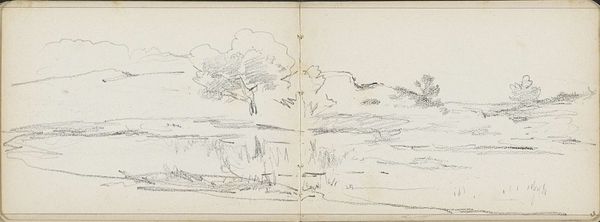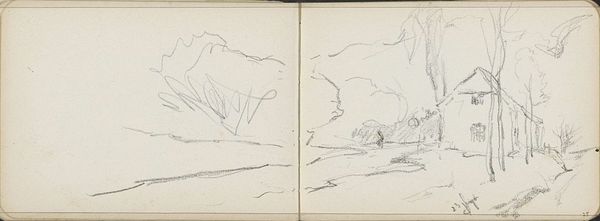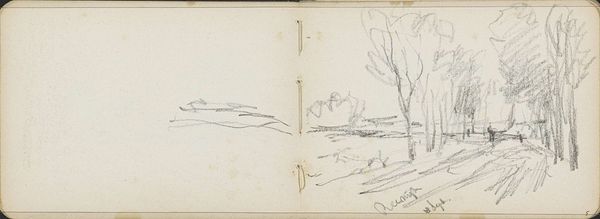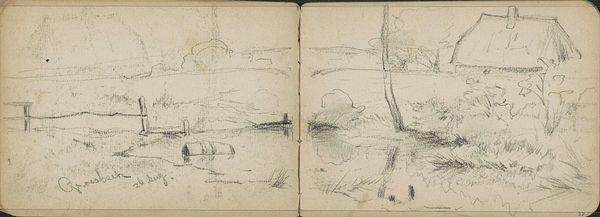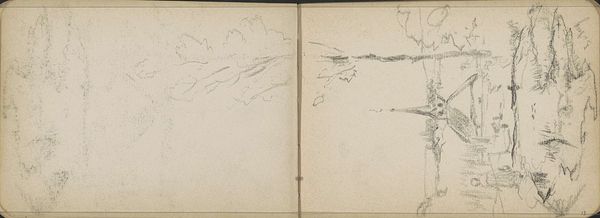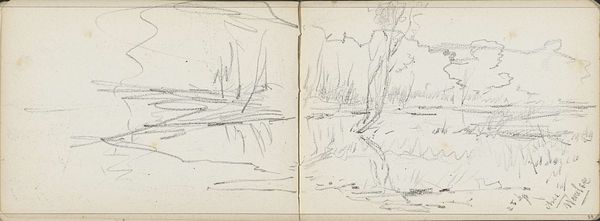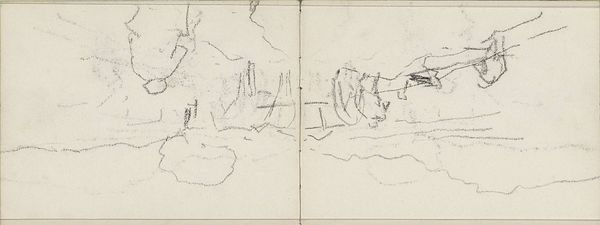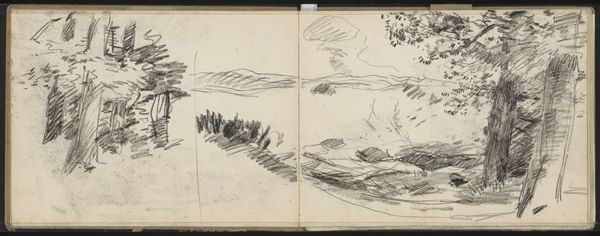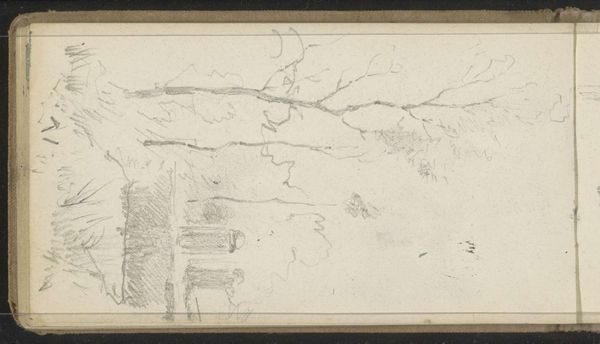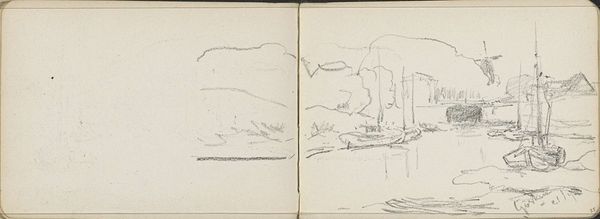
#
pen sketch
#
personal sketchbook
#
idea generation sketch
#
sketchwork
#
ink drawing experimentation
#
pen-ink sketch
#
pen work
#
sketchbook drawing
#
sketchbook art
#
initial sketch
Copyright: Rijks Museum: Open Domain
Curator: This small sketchbook drawing, "Man op een dijk bij Reeuwijk," possibly from Willem Cornelis Rip dating somewhere between 1866 and 1929, presents a quiet moment in what appears to be the Dutch countryside. Editor: My first impression is one of fleeting observation. The pencil strokes are so quick and light, capturing the scene with a delightful brevity. It almost feels like catching a whisper. Curator: It’s a wonderful example of Rip's sketchwork. The rapid lines used to depict the figure on the dike, they almost seem to echo a sense of constant motion, doesn’t it? Editor: Yes, but within that hurriedness, look how deliberately he's varied the pressure. The darker strokes give form to the figure, contrasting against the feathery suggestions of the landscape. He controls depth simply by adjusting line weight. Curator: I’m drawn to how this simple figure becomes emblematic of human engagement with nature. The dike, traditionally built to control the water, frames a figure who is interacting, perhaps maintaining it. There is something enduring about this tableau, it is almost biblical. Editor: Biblical in what way? The stark contrast of the figure with its surroundings? I find that interesting. Curator: Yes, exactly. And in that solitude. The landscape has the echoes of many figures and histories implied within it, but the sketch shows the figure’s almost mythic encounter with the land itself. Editor: I agree. Despite its loose, almost abstract quality, it feels fundamentally solid. He’s anchored by those weighted horizontal lines of the bridge, contrasted against the upward strokes depicting plant-like motifs. Curator: Looking at his rapid strokes to communicate so much about the landscape. I find it impressive, it evokes the tradition and hard work of maintaining land over generations, but on the scale of something brief, delicate, and individual. Editor: Absolutely. A miniature distillation of the relationship between humankind and environment, expressed through a remarkably efficient use of line and composition. Curator: A thought captured in lines – like a melody written in ink. Editor: Precisely, and a testament to the power of seeing and representing through observation.
Comments
No comments
Be the first to comment and join the conversation on the ultimate creative platform.

